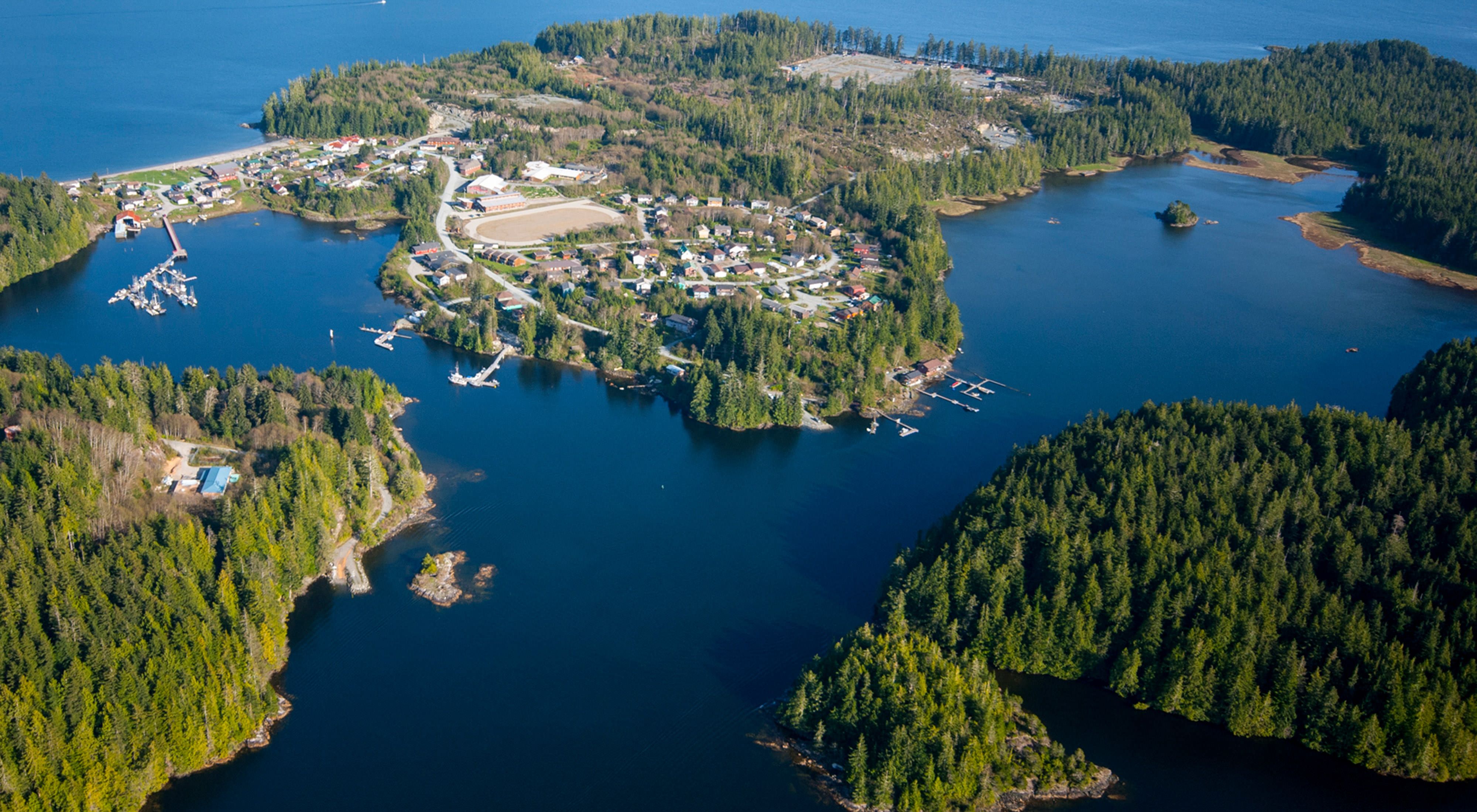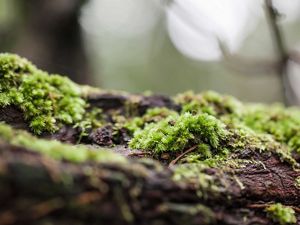"Everything is One"
A conversation with Tyson Atleo, hereditary chief-in-line of the Ahousaht Nation and Natural Climate Solutions Program Director for Nature United
Why did you join Nature United?
Before joining Nature United, I'd spent years on the other side, working in partnership with the organization to develop a land use vision for our traditional territory, our hahoulthlee. The two-year visioning process was empowering for our people. It is literally the first map created in recent history that shows sacred sites, renames places in our language, and pinpoints where and how we will generate income, support our families and build a sustainable future. It also identifies 150,000 acres of areas the Ahousaht would like to see protected. In fact, I’ve said over and over again that it is one of the most monumental undertakings for our nation in my lifetime.

Seeing how Nature United and its global affiliate, TNC, operated really impressed me—never forcing an agenda on our community but instead offering capacity-building and support so we could make our own decisions. More broadly, Nature United is what I would call a "conscious conservation organization," meaning they are aware of the impact of conservation not just on the environment but also on people. Working for an organization where I can advance protection of places like Clayoquot Sound while promoting the health and well-being of Indigenous communities is a childhood dream come true.
How did the partnership with Nature United come about?
My father, Shawn Atleo, invited Nature United to come to Clayoquot Sound after hearing about their work with First Nations in the Great Bear Rainforest. But the partnership has thrived because of the values we share and our respect for one another. The foundation of Ahousaht cultural values is heshook-ish tsawalk, meaning "everything is one." To me, that interconnectivity is the essence of conservation—the recognition that ecosystems are complex and that we have a responsibility to steward those ecosystems because we are part of them; they sustain us.
Quote: Tyson Atleo

The foundation of Ahousaht cultural values is heshook-ish tsawalk, meaning "everything is one." To me, that interconnectivity is the essence of conservation.
I’d even go further to say that Nature United’s act of acknowledging and valuing Indigenous peoples’ connection to land is an act of reconciliation. In Canada right now, the most common understanding of reconciliation is around residential schools, but during that era, the Canadian government also took away Indigenous peoples’ right to steward their territories. Nature United is working with their Indigenous partners to return that capacity and responsibility to whom it originally belonged.
What excites you most about your role at Nature United as Director of Natural Climate Solutions?
In June 2021, a study that was led by Nature United showed how Natural Climate Solutions can help Canada mitigate up to 78 Mt CO2e annually in 2030—an amount equal to the current greenhouse gas emissions from powering every single home in Canada for about three years. And we know that when developed and implemented by governments, Indigenous and local communities and industry, these nature-based solutions deliver incredible social, environmental and economic benefits.
Not only does the report provide us with scientific evidence of the solutions offered by the effective conservation of ecosystems in our collective fight against the climate crisis, but it also, for me, reinforces lessons from my Ahousaht culture, that have told us for a very long time the importance of carefully maintaining respectful relationships with the life giving forces of the natural world.
I see the report and opportunities for natural climate solutions as a reminder and call to action for us to value our interconnected relationship to nature and how we are dependent on protecting, better managing and restoring natural systems for our collective livelihoods and wellbeing.
It is critical to understand that we can only advance this important work through meaningful collaboration, strong government action to introduce new policy incentives, upholding and investing in Indigenous rights and knowledge, and building economic solutions for industry—which will result in climate progress, healthier communities, and thriving ecosystems.
Quote: Tyson Atleo
I'm looking forward to advancing meaningful collaboration that spurs strong government action to introduce new policy incentives, uphold and invest in Indigenous rights and knowledge.
Our strategy revolves around strengthening local leadership, advancing sustainable, local livelihoods, and providing the resources and tools for local decision-making. Our work in the Great Bear Rainforest, Clayoquot Sound and beyond demonstrates what I’ve seen my whole life: No matter where they live, Indigenous and local communities share a strong connection to their traditional landscapes and an ancestral duty to steward the fish they eat, the animals they hunt for food and clothing, the natural life that sustains them.
In your view, how does economic development fit with conservation?
It’s simple: One is not possible without the other. Access to sustainable economic opportunities is critical to the well-being of local people. And community wellbeing is critical to conservation success. Large-scale conservation can only be successful and sustainable with the full endorsement and leadership of the local people who have the greatest stake in the outcome. Plus, the happier and healthier people are, the more capacity they have to care about and lead conservation.


Developing conservation strategies rooted in economic development is ground-breaking, challenging work. But there are a lot of great examples of success across the world that we can learn from. I traveled to Kenya and learned about how Indigenous grazing communities are working with the tourism industry and Kenyan government to establish new wildlife conservancies on land owned by Indigenous tribes. This can only be possible where industry, communities and government work together to ensure economic certainty for land owners into the future.
We are applying a similar strategy in my home of Ahousaht. Our land use vision protects 82 percent of our territory—a first major step in realizing the economic potential of conservation. The vision builds on a protocol agreement with the B.C. government, and provides certainty for tourism, carbon, energy, aquaculture, restoration, fisheries and other opportunities that may have not been available otherwise. We are leveraging this certainty by developing our own initiatives and working closely with existing businesses to realize mutually beneficial economic opportunities in a diversity of sectors. This provides our people with great deal of opportunity to improve quality of life and community well-being while protecting the local ecosystems.
Tyson Atleo is a hereditary chief-in-line of the Ahousaht Nation. As the Natural Climate Solutions Program Director for Nature United, Tyson leads our work advancing nature-based strategies to reduce greenhouse gas emissions. Before leading the Natural Climate Solutions program, Tyson worked as Nature United's Community Economic Development Lead, integrating economic development into our conservation work along the Emerald Edge—a 100-million-acre landscape that stretches from Washington, up the British Columbia coast to southeast Alaska.


